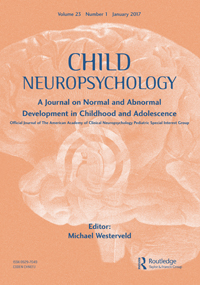From the abstract: "This study tests the factor structure, measurement invariance, and correlates of the Childhood Executive Functioning Inventory (CHEXI) with a large and diverse sample of 3- to 5-year-olds (n = 844). Consistent with previous studies, a two-factor model that distinguishes working memory from inhibition provides the best fit to the observed data. This two-factor model has been shown to demonstrate strong measurement invariance for different subgroups of children (boys vs. girls, high vs. low income). Whereas boys tend to have greater working memory and inhibition difficulties (Cohen’s d = 0.15 and 0.20, respectively), children from low-income households tend to have more working memory problems than their peers from high-income households (Cohen’s d = 0.25). Finally, correlations between CHEXI scores, examiner reports of child behavior, and child performance on a battery of executive function (EF) tasks were investigated. CHEXI scores were found to be more consistently related to examiner reports of child behavior than child performance on EF tasks. Tthe strengths and weaknesses of the CHEXI as a questionnaire measure of EF are discussed, and directions for future research are suggested."
Citation
DOI

